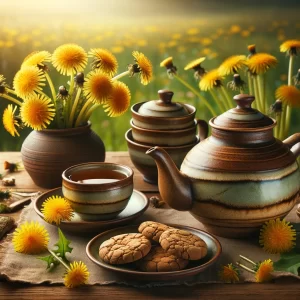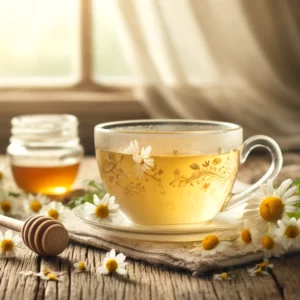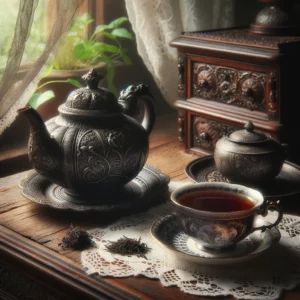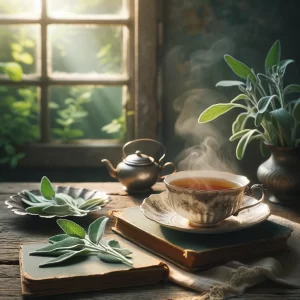Dandelion Tea, often overlooked as a simple weed, is actually a treasure trove of taste and tradition. This blog post delves into the fascinating world of Dandelion Tea, exploring its origins, unique qualities, and how to enjoy this herbal delight. Whether you’re a tea enthusiast or a curious newcomer, join us in uncovering the secrets behind brewing the perfect cup of this earthy beverage.
Table of Contents
- Introduction
- The Roots of Dandelion Tea
- What Makes Dandelion Tea Special?
- Brewing the Perfect Cup of Dandelion Tea
- Creative Ways to Enjoy Dandelion Tea
- Where to Find and How to Store Dandelion Tea
- Conclusion
- Try Dandelion Tea
Introduction
Welcome to the delightful world of Dandelion Tea—a brew that turns the ordinary dandelion, often dismissed as a pesky weed, into an extraordinary herbal tea. This post aims to shed light on Dandelion Tea’s rich history, its distinct flavor profile, and the simple joy of brewing it. Dandelions are not just weeds; they are a source of nutrition and have been part of various culinary traditions around the world. Here, we will guide you through the journey of transforming this ubiquitous yard plant into a tasty and refreshing beverage.
The Roots of Dandelion Tea
Dandelion Tea has roots that run deep through history, tracing back to ancient civilizations that utilized the plant for its culinary and medicinal properties. Unlike other teas that come from the Camellia sinensis plant, Dandelion Tea is made from the leaves, roots, or flowers of the Taraxacum species, a large genus of flowering plants in the Asteraceae family. This humble herb has been appreciated across continents for centuries, with each culture embracing it for its unique benefits and flavors.
What Makes Dandelion Tea Special?
Dandelion Tea stands out for several reasons:
- Flavor Profile: It offers a unique taste experience. The leaves yield a slightly bitter yet refreshingly grassy flavor, while the roots can produce a stronger, earthier taste. The flowers, when used, add a subtle sweetness.
- Versatility: From root to flower, every part of the dandelion can be used in making different variations of tea, each offering a distinct flavor and experience.
- Cultural Significance: Across the globe, dandelions have been celebrated in folklore and traditional medicine, symbolizing resilience, growth, and the ability to thrive in challenging conditions.
Brewing the Perfect Cup of Dandelion Tea
Brewing Dandelion Tea is both an art and a science. Here’s how to craft the perfect cup:
- Choose Your Part: Decide whether you want tea made from the leaves, roots, or flowers of the dandelion.
- Preparation: Clean the chosen part thoroughly. If using roots, they should be dried and chopped. Leaves and flowers can be used fresh or dried.
- Brewing: Steep your dandelion part in hot water. The ideal temperature is just below boiling, around 95°C (203°F), for about 5-10 minutes, depending on desired strength.
- Customization: Feel free to experiment by adding honey, lemon, or mint to enhance the flavor according to your taste preferences.
Creative Ways to Enjoy Dandelion Tea
Beyond the traditional hot brew, Dandelion Tea can be enjoyed in a variety of creative ways:
- Iced Dandelion Tea: Cool and refreshing, perfect for hot summer days.
- Dandelion Tea Latte: Add frothed milk and a hint of sweetener for a creamy twist.
- Dandelion Tea Blends: Mix with other herbs or teas like mint or chamomile for a unique flavor combination.
Where to Find and How to Store Dandelion Tea
Finding Dandelion Tea can be as simple as looking in your backyard or as refined as selecting a specialty blend from a tea shop. When choosing dandelions from nature, ensure they are free from pesticides and pollutants. For storage, keep your tea in a cool, dark place, away from strong odors and moisture to maintain its freshness and flavor.
Conclusion
Dandelion Tea is more than just a beverage; it’s a journey into the heart of nature’s resilience and bounty. Whether you choose to harvest your own dandelions or purchase a prepared blend, this tea offers a unique taste experience that connects us to the earth and its endless generosity. So, the next time you see a dandelion, consider the possibility of a delightful tea waiting to be brewed. Explore, experiment, and enjoy the simple pleasures that Dandelion Tea has to offer.
Try Dandelion Tea
“As an Amazon Associate I earn from qualifying purchases.”
[azonpress template=”grid” asin=”B00IKH2Z6M,B00JFTSUV8,B0D9GSLVSL,B00U0JK63M”]



